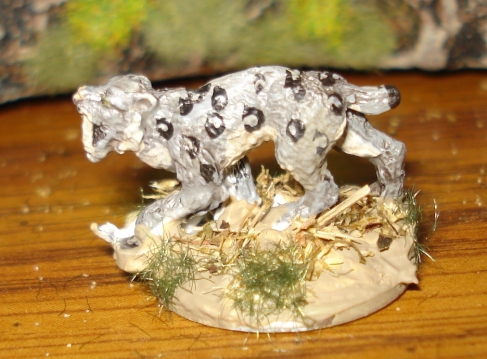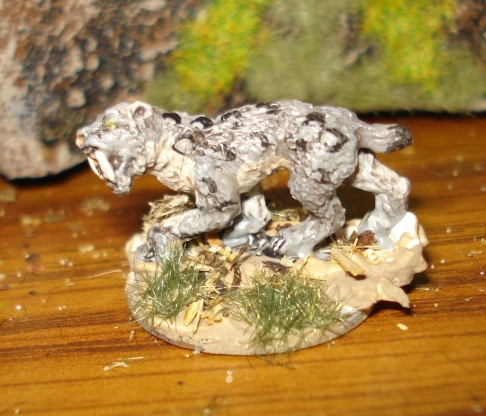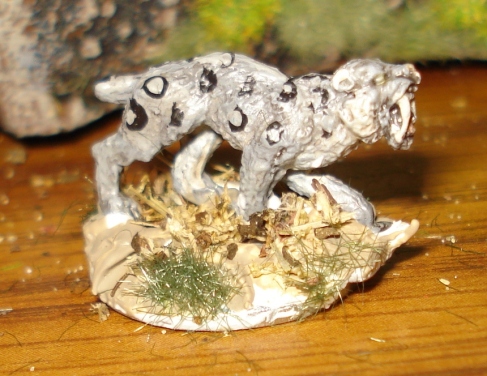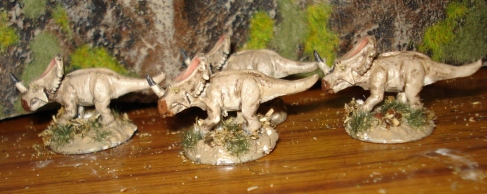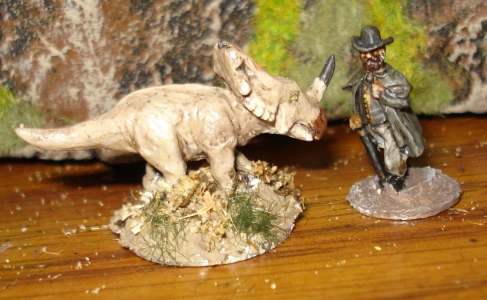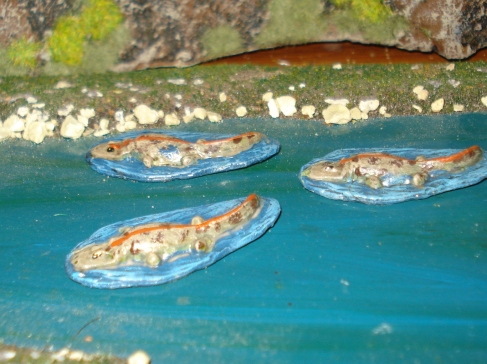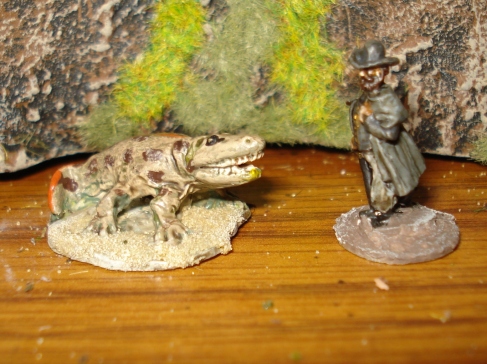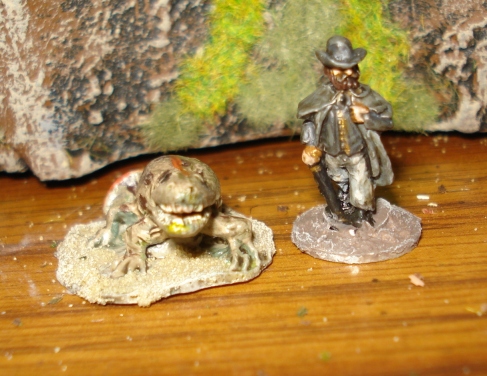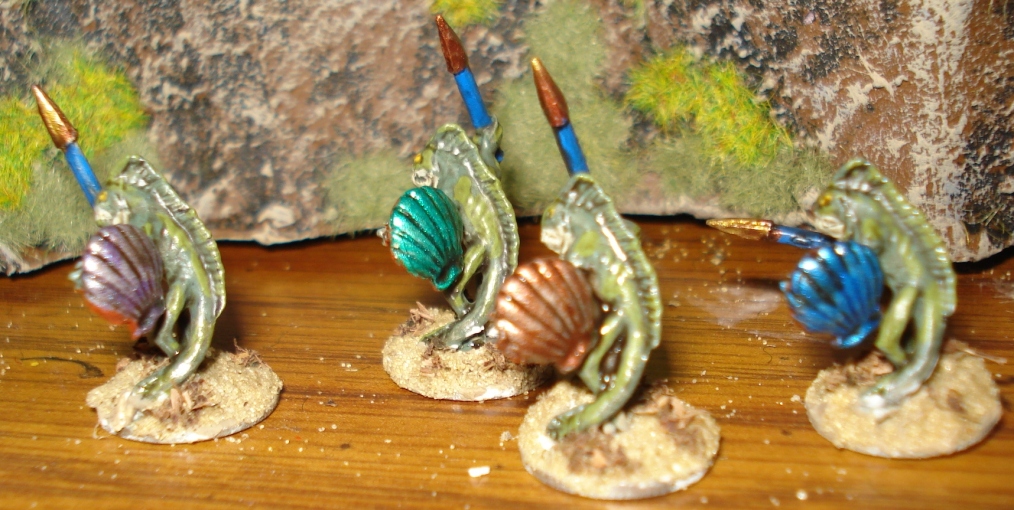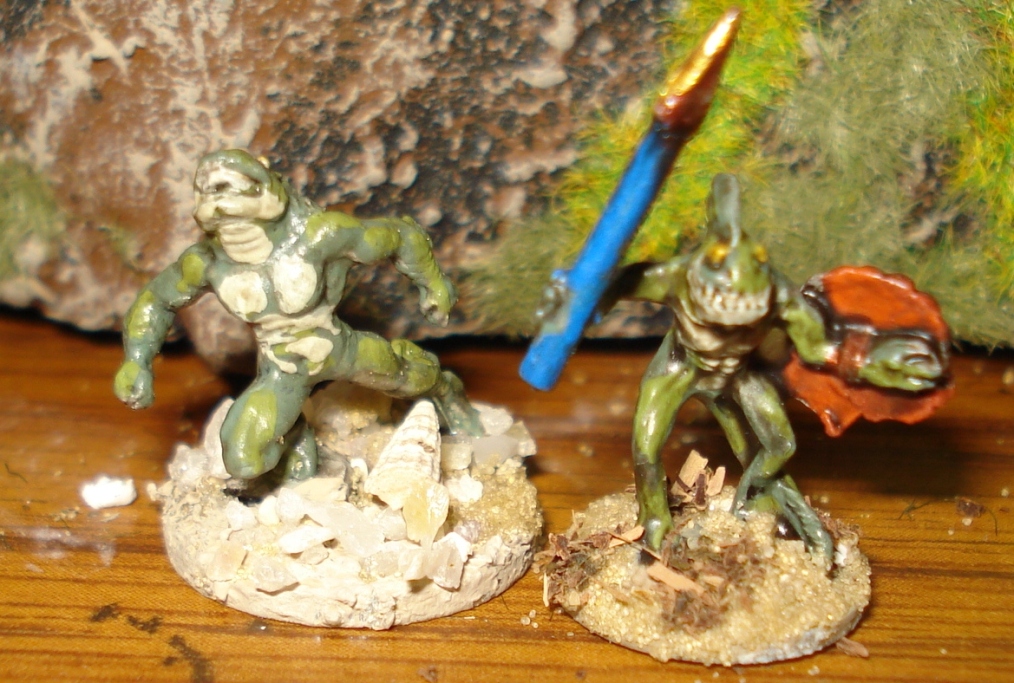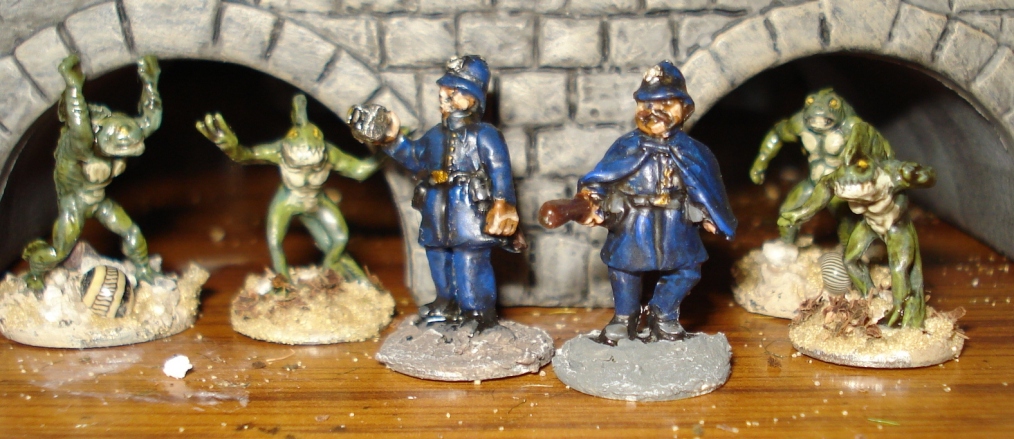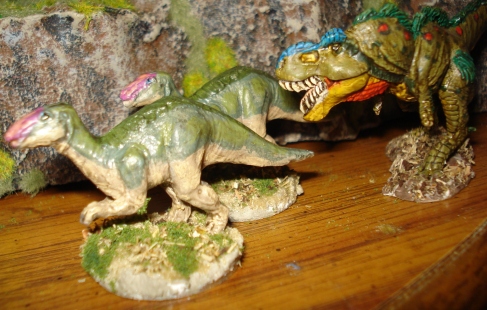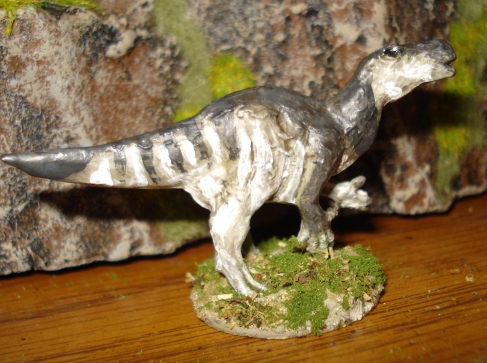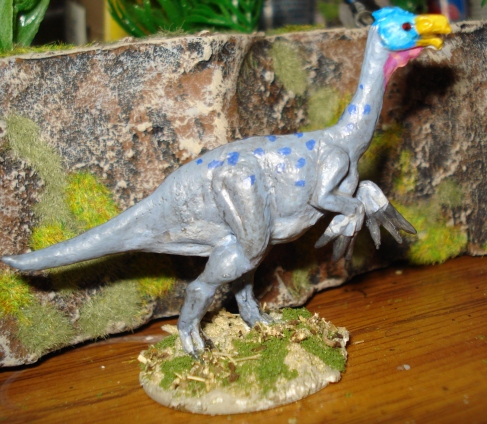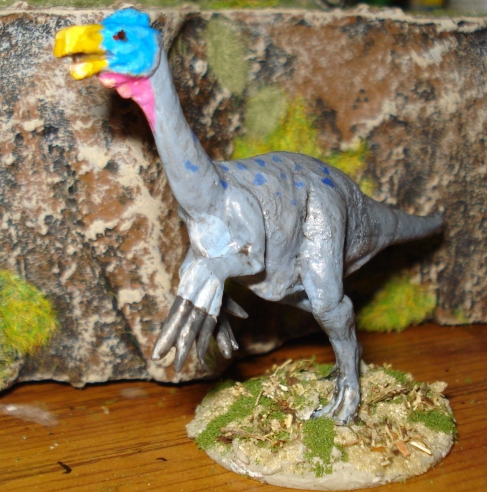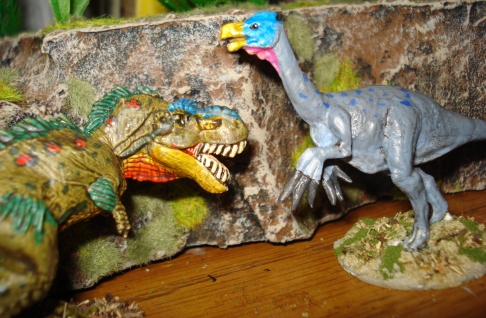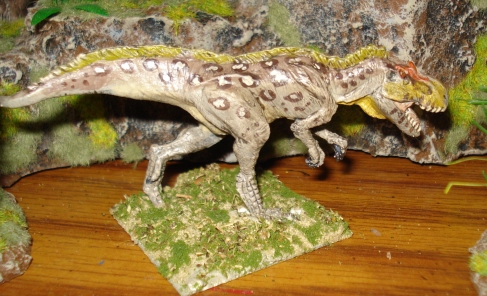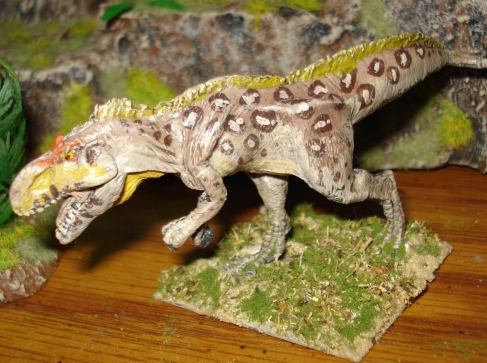Megalania (Varanus priscus) is an extinct species of giant monitor lizard,[1] part of the megafaunal assemblage that inhabit
ed Australia during the Pleistocene. It is the largest terrestrial lizard known to have existed, reaching an estimated length of 3.5 to 7 meters (11.5 – 23 ft), and weighing between 97–1,940 kg (214–4,277 lb), but the fragmentary nature of known remains make estimates highly uncertain. Megalania is thought to have had a similar ecology to the living Komodo dragon (Varanus komodoensis). The youngest fossil remains of giant monitor lizards in Australia date to around 50,000 years ago.[2] The first indigenous settlers of Australia might have encountered Megalania, and been a factor in their extinction.
I have three examples 0f large monitors in 15mm. A pack of 6 Komodo Dragons by Splintered Light Miniatures, a pack of two Megalania from Mick Yarrow Miniatures, and the monster of the trio from Khurasan Miniatures. The first example measures about 4CM, then second at around 5.5CM, and the third a massive 9.5cm. All are cast as one piece in white metal. All are nicely detailed models that look the part. While the M.Y. model is portrayed as raising itself up on its forelegs (about 15mm high) with protruding tongue, the Splintered Light and Khurasan models each crawl along as if approaching a potential meal. I show 15mm Blue Moon detective and Jack for scale. He comes from the Jack the Ripper set, and uselessly fires his revolver at the approaching lizard. As per figure size when compared with real animals, the S.L.M. models at 4cm would be about 13′ at 1/100th. which is a bit larger than the 10′ maximum of existing Komodo Dragons, but within the lower range for Megalania. The M.Y. Miniatures example is 5,5CM, which scales up to 18′ in 1/100th., which fall nicely within the size range estimated for giant monitors. The monster of the group. Khurasan’s Megalania measures a whopping 9’5CM. or 31′ at 1/100th., which makes this model a bit larger than known existing fossils, but this is reasonable due to the fragmentary nature of the remains. No one knows how big these things grew.
Blue Moon detective with Khurasan and Splintered Light monitors,











